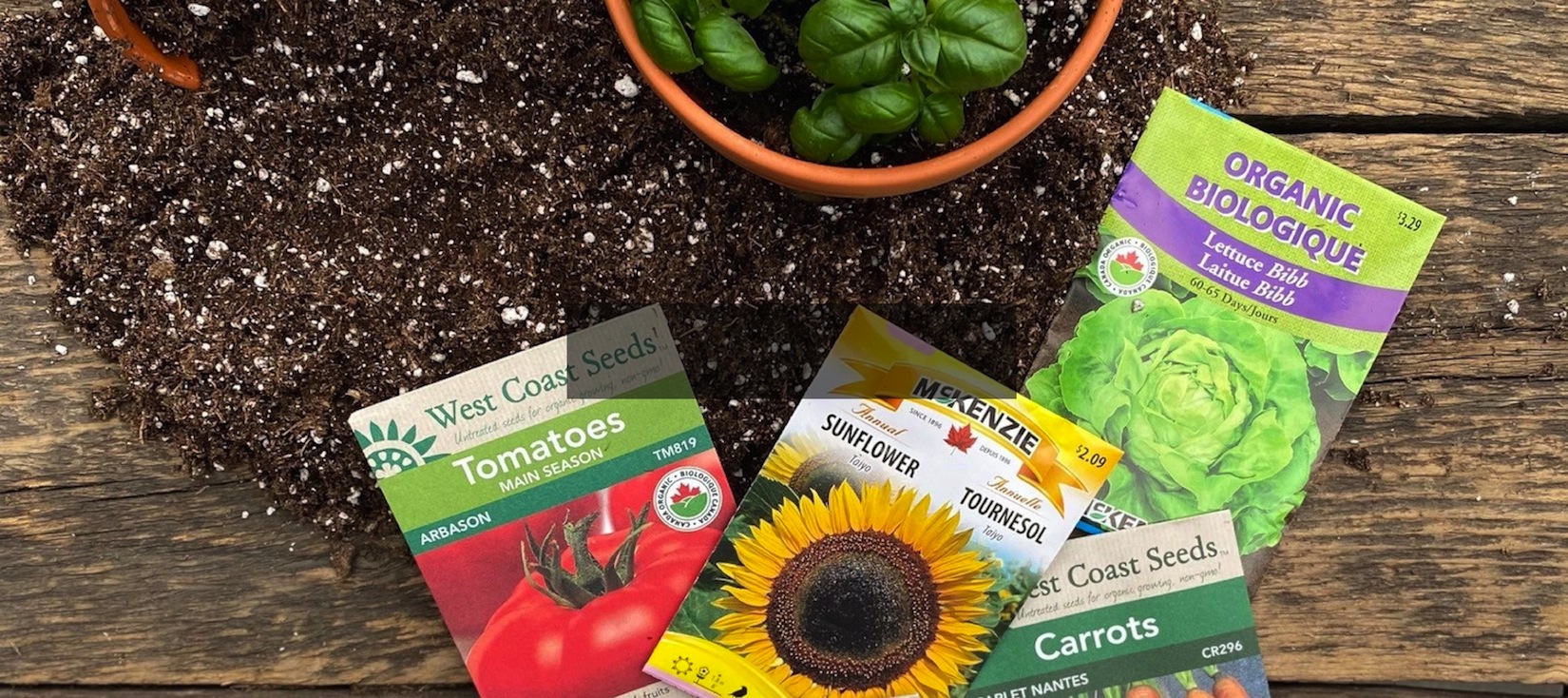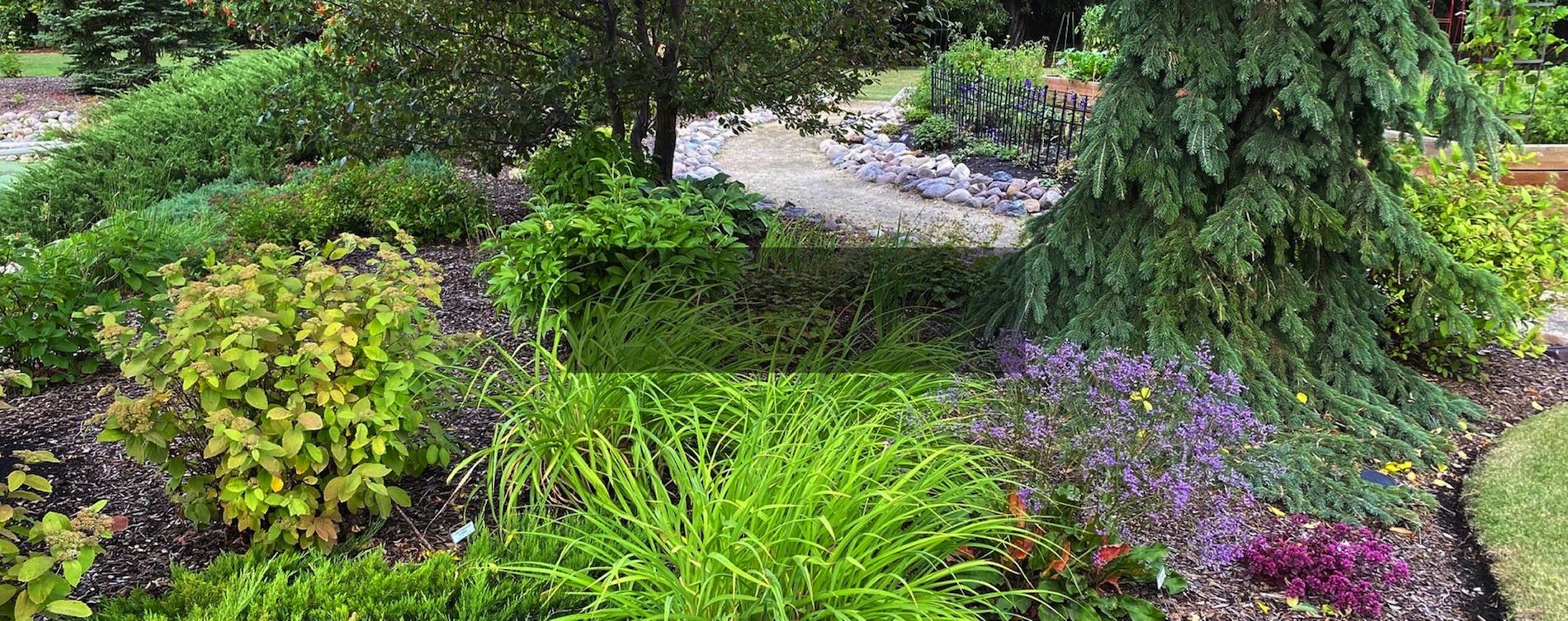Vegetables From Seed

Starting vegetables from seed indoors not only saves you money, but helps plants get a head start on their growth in the garden. For many varieties, this means an earlier harvest. Though many vegetables can be sown from seed directly in the garden in spring, here are a few that will benefit from being started indoors: Cucumber, Melon, Pepper and Tomato.
Starting Seeds
- When selecting seeds be sure to check the package for maturity days – this determines when seeds should be seeded. For example; if a tomato package reads start 6-8 weeks prior to planting out, this means you should count back 8 weeks from planting out. In our area, we list the Victoria Day Long Weekend as the date for planting out.
- Add 2-3 weeks to the seeding dates of Tomatoes and Peppers; as they require warm summers to produce fruit on time and in abundance, starting them earlier means a timely harvest.

Containers
- Starting seeds indoors should be done in plastic flats, peat pots or jiffy pellets.
- Jiffy seed starter kits are great for new gardeners; they come complete with peat pellets, grow tray and plastic dome.
Soil
- ProMix seed starter mix is a well drained mix perfect for seeds.
- Jiffy pellets are a soilless option. Just add water and the jiffy peat pellet quickly swells up to 7 times it’s original size – creating it’s own little pot.
Seeding Steps
- ProMix should be moist enough to squeeze a handful of soil and 1-3 droplets of water fall; if using Jiffy pellets, moisten to expand and drain any excess water.
- If using empty cell trays, fill cells within 1/2” of the top edge with soil. Gently press seeds into soil and lightly cover with vermiculite or a dusting of soil to prevent drying out. In Jiffy pellets, seed can be pressed into top of pellet. As a rule of thumb, sow seeds no deeper than their thickness.
- Damping Off is a common disease that attacks seedlings; to prevent this, sprinkle top of the soil after seeding with cinnamon, an all-natural fungal preventative. As well, seedlings can be watered with a strong mixture of chamomile tea once per week (in between regular waterings).
- Place humidity dome over seed flat. Check seed cells/pellets daily for moisture. Water with a misting bottle as opposed to larger watering can (which can create large puddles and drown seeds).
Germination
- For consistent germination, ensure the soil stays moist (keep humidity dome on UNTIL the seeds germinate).
- Bottom heat will provide seeds with an advantage – heating mats provide a consistent warmth resulting in faster germination and better root growth.

Lighting
- Once seeds have germinated, lighting is crucial for strong, healthy growth. Seedlings will require at least 8 hrs of light. If you do not have a south facing window, be sure to supplement with fluorescent or LED light. Hydrofarm all in one light stand are very economical and easy to set up.
- Lights should be placed about 12” above tops of seedlings. The closer the light is, the shorter and stockier the vegetable plant.
- Raise the lights as the seedlings grow.
- A lack of sufficient light results in weak, spindly seedlings.
When to Transplant
- Some vegetables may outgrow their cell packs weeks before they can be planted outdoors. Examples of these are: Tomatoes, Melons, Zucchini
- If seedlings have outgrown their cell packs, seedlings can be transplanted into individual pots (3-4”).
- Use caution when transplanting; seedling stems and roots are easily bruised
- Use a dibbler or a fat marker to insert seedling into soil. Water in with 1/4 strength of 10-52-10 once a week for the first 3 weeks after transplanting to lessen shock and promote root growth.
Hardening Off
- Depending on the vegetables, some can be planted out prior to frost – see list at back of notes.
- Once daytime temperatures are consistently above 4 degrees Celsius, seedlings can be moved outdoors for the day. Note that seedlings will be sensitive to the light and wind; ensure they are in an eastern exposure or filtered light area, out of the wind. Ensure seedlings are watered before you set them out each day; outdoor air dries out small cells and pots rapidly.
- When temperatures are consistently above 5ºC AT NIGHT, seedlings can be transplanted into the garden. If temperatures are unseasonably cold, use cozy coats or row covers to protect plants at night.

Sowing Vegetables Directly into the Garden
- Several veggies can be sown directly into the garden with great results. Here are some common ones: Carrots, Beets, Lettuce, Onions, Peas and Radishes.
- Prior to seeding into the garden, it is very important that your soil is prepared. Vegetables require a well drained, rich soil. If you have not recently, ensure you amend the soil with large amounts of compost. Sea Soil is an excellent amendment that not only improves soil texture, but provides nutrients. Sea Soil can be applied at a 2” depth across the soil surface, then tilled in.
- Follow carefully the instructions on each seed packet. They will tell you how deep to plant the seeds in the soil, as well as how far apart each row should be.
Note: Hang on to your packets; they do often indicate how the seedlings should be thinned once they all germinate.





